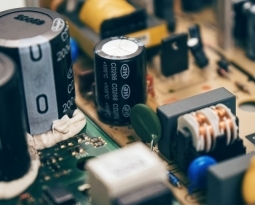New Material Offers a Revolutionary Way to Power Electronics
A recent finding by a research team stationed at Ohio State University could possibly change how future electronic devices are fabricated.
The Ohio State team worked out a unique way to improve how our electronics utilize electrons. They’ll achieve this using a new material that can serve two distinct roles in an electronic device. The dual nature of the material will eliminate the need for manufacturers to use multiple materials.
“We have essentially found a dual-personality material,” said Joseph Heremans, co-author of the study, professor of mechanical and aerospace engineering and Ohio Eminent Scholar in Nanotechnology at Ohio State. “It is a concept that did not exist before.”
The research team has decided to call this unique material phenomenon and electronic structure “goniopolarity”, to reflect its dual functionality.
If everything works and goes as planned, technologists will be able to avail this discovery to create different sorts of electrical devices, from light emitting diodes in display screens to solar cells. The material can also be used in laptops as well as light sensors needed for our smartphone cameras.
With each device, the material works by moving holes (positive charges) and electrons (negative charges) to conduct electricity. And to complete this process in the past, different materials were needed. One to act as a hole holder whereas the other acts as an electron holder. No material, hitherto, could act as both.
The new material, NaSn2As2, however, is a superlattice (layered crystal) capable of doubling as a hole holder and electron holder simultaneously. The team believes the material works this way due to its exceptional electronic structure. Better yet, the team pointed out there may be other layered materials (yet to be identified) that boast similar properties.
“We just haven’t found them yet,” Heremans said. “But now we know to search for them.”

















